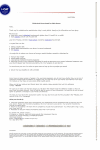Effects of internet-based tailored advice on the use of cholesterol-lowering interventions: a randomized controlled trial
- PMID: 20837464
- PMCID: PMC2956332
- DOI: 10.2196/jmir.1364
Effects of internet-based tailored advice on the use of cholesterol-lowering interventions: a randomized controlled trial
Abstract
Background: Elevated low-density lipoprotein (LDL) cholesterol is a leading risk factor for cardiovascular disease. Despite the availability of proven interventions to lower LDL cholesterol, their use remains subobtimal. Many websites provide interactive, tailored advice on cardiovascular risk in an attempt to help bridge this evidence-practice gap, yet there is little evidence that provision of such a tool is effective in changing practice.
Objectives: The objective was to define the effects on use of cholesterol-lowering interventions of a consumer-targeted tailored advice website.
Methods: This was a prospective, double-blind, randomized controlled trial open to any adult Australian with access to the Internet. A total of 2099 participants were randomized. Of these, 45% were male, the mean age of all participants was 56, and 1385 (66%) self-reported hypercholesterolemia. Follow-up information was obtained for 1945 (93%). Participants completed a brief online questionnaire. Individuals assigned to intervention received immediate, fully automated, personally tailored advice (based on current guidelines) regarding the need for commencement of statin therapy, increased statin therapy in those already on treatment, and nondrug intervention strategies. Control group participants were directed to static Web pages providing general information about cholesterol management.
Results: The primary outcome was the proportion of participants that commenced or increased use of prescribed cholesterol-lowering therapy. Of the total 2099 randomized participants, 304 (14%) met eligibility criteria for cholesterol-lowering therapy but were not prescribed treatment, and 254 (12%) were prescribed treatment but were not achieving the recommended target level. Treatment was commenced or increased in 64 (6.0%) of the 1062 intervention group participants and 79 (7.6%) of the 1037 control group participants (% difference = -1.6%, 95% confidence interval [CI] -3.75 to 0.57, P = .15). No differences were found between the randomized groups for the secondary outcomes of "discussed treatment with a health professional" (% difference = -3.8%, 95% confidence interval [CI] -8.16 to 0.19, P = .08), "had their cholesterol checked" (% difference = -1.5%, 95% CI -5.79 to 2.71, P = .48), "had their blood pressure checked" (% difference = 1.4%, 95% CI -2.55 to 5.34, P = .49) or made a lifestyle change (P values between .49 and .96).
Conclusions: Despite providing specific carefully tailored advice, this website had no detectable effect on cholesterol management strategies. This finding raises considerable uncertainty about the value of Internet-based tools providing tailored advice directly to consumers.
Trial registration: NCT00220974; http://clinicaltrials.gov/ct2/show/NCT00220974 (Archived by WebCite at http://www.webcitation.org/5sdq63rrY).
Conflict of interest statement
None declared
Figures
References
-
- Expert Panel on Detection, Evaluation, and Treatment, Evaluation, and Treatment of High Blood Cholesterol in Adults Executive Summary of The Third Report of The National Cholesterol Education Program (NCEP) Expert Panel on Detection, Evaluation, And Treatment of High Blood Cholesterol In Adults (Adult Treatment Panel III) JAMA. 2001 May 16;285(19):2486–97.jsc10094 - PubMed
-
- Graham I, Atar D, Borch-Johnsen K, Boysen G, Burell G, Cifkova R, Dallongeville J, De Backer G, Ebrahim S, Gjelsvik B, Herrmann-Lingen C, Hoes A, Humphries S, Knapton M, Perk J, Priori SG, Pyorala K, Reiner Z, Ruilope L, Sans-Menendez S, Op Reimer WS, Weissberg P, Wood D, Yarnell J, Zamorano JL, Walma E, Fitzgerald T, Cooney MT, Dudina A, Vahanian A, Camm J, De Caterina R, Dean V, Dickstein K, Funck-Brentano C, Filippatos G, Hellemans I, Kristensen SD, McGregor K, Sechtem U, Silber S, Tendera M, Widimsky P, Zamorano JL, Altiner A, Bonora E, Durrington PN, Fagard R, Giampaoli S, Hemingway H, Hakansson J, Kjeldsen SE, Larsen L, Mancia G, Manolis AJ, Orth-Gomer K, Pedersen T, Rayner M, Ryden L, Sammut M, Schneiderman N, Stalenhoef AF, Tokgözoglu L, Wiklund O, Zampelas A European Society of Cardiology (ESC); European Association for Cardiovascular Prevention and Rehabilitation (EACPR); Council on Cardiovascular Nursing; European Association for Study of Diabetes (EASD); International Diabetes Federation Europe (IDF-Europe); European Stroke Initiative (EUSI); Society of Behavioural Medicine (ISBM); European Society of Hypertension (ESH); WONCA Europe (European Society of General Practice/Family Medicine); European Heart Network (EHN); European Atherosclerosis Society (EAS) European guidelines on cardiovascular disease prevention in clinical practice: full text. Fourth Joint Task Force of the European Society of Cardiology and other societies on cardiovascular disease prevention in clinical practice (constituted by representatives of nine societies and by invited experts) Eur J Cardiovasc Prev Rehabil. 2007 Sep;14(Suppl 2):S1–113. doi: 10.1097/01.hjr.0000277983.23934.c9. http://journals.indexcopernicus.com/ICinfoauthor.php?PMID=1772640700149831-200709001-00002 - DOI - PubMed
-
- Tonkin A, Barter P, Best J, Boyden A, Furler J, Hossack K, Sullivan D, Thompson P, Vale M, Cooper C, Robinson M, Clune E, National Heart Foundation of Australia. Cardiac Society of Australia and New Zealand National Heart Foundation of Australia and the Cardiac Society of Australia and New Zealand: position statement on lipid management--2005. Heart Lung Circ. 2005 Dec;14(4):275–91. doi: 10.1016/j.hlc.2005.10.010.S1443-9506(05)00216-7 - DOI - PubMed
-
- Schwartz JS. Economics and cost-effectiveness in evaluating the value of cardiovascular therapies. Comparative economic data regarding lipid-lowering drugs. Am Heart J. 1999 May;137(5):S97–104.S0002870399001696 - PubMed
-
- Szucs TD. Pharmaco-economic aspects of lipid-lowering therapy: is it worth the price? Eur Heart J. 1998 Oct;19(Suppl M):M22–8. - PubMed
Publication types
MeSH terms
Substances
Associated data
LinkOut - more resources
Full Text Sources
Medical
Miscellaneous



